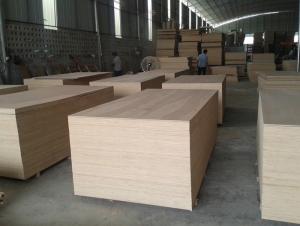When it comes to choosing the right material for your construction or woodworking project, two popular options often come to mind: Oriented Strand Board (OSB) and Plywood. Both have their own set of advantages and disadvantages, and the choice between them can be a daunting task for many. In this article, we’ll dive into the world of OSB and Plywood, exploring their unique characteristics, applications, and how to choose the best one for your needs.
The Basics: What is OSB and Plywood?
Before we get into the nitty-gritty, let’s clarify what each material is. OSB is a type of engineered wood that’s made from thin strands of wood that are arranged in crosswise layers. These layers are then bonded together under heat and pressure with a strong adhesive. On the other hand, Plywood is a versatile and widely used material made from thin layers of wood veneer that are glued together, with each layer’s grain running perpendicular to the adjacent layers. This creates a strong and stable material that’s resistant to warping.
Aesthetic Appeal: The Look and Feel
One of the first things you might consider when choosing between OSB and Plywood is their appearance. OSB has a rough, textured surface that’s not typically used for visible applications. It’s often covered with drywall, paneling, or other materials to create a smooth finish. Plywood, however, offers a more refined look with its smooth surface and the option to use natural wood veneers, making it a popular choice for furniture and decorative applications.
Durability and Strength: Which Lasts Longer?
Durability is a key factor in any construction material. OSB is known for its strength and rigidity, which makes it ideal for structural applications like floor sheathing, roof sheathing, and wall panels. It’s also resistant to moisture, which is a significant advantage in outdoor or wet environments. Plywood, while also strong, is more susceptible to delamination when exposed to moisture, making it less suitable for exterior applications without proper protection.
Flexibility in Use: From Floors to Furniture
Both OSB and Plywood offer a range of applications, but they shine in different areas. OSB is a go-to choice for builders who need a cost-effective and strong material for large-scale projects. Its versatility lies in its ability to handle heavy loads and resist warping under stress. Plywood, with its natural wood veneer layers, is perfect for applications that require a combination of strength and aesthetics, such as cabinetry, furniture, and woodwork that will be visible.
Cost Considerations: Budget-Friendly Options
When it comes to budget, OSB often comes out on top as the more affordable option. It’s a popular choice for large-scale construction projects due to its lower cost compared to Plywood. However, the initial cost savings of OSB should be weighed against its potential for higher maintenance costs over time. Plywood, while more expensive, can be a more cost-effective choice in the long run for projects that require a higher level of durability and resistance to moisture.
Environmental Impact: Green Building Choices
For those who are environmentally conscious, the choice between OSB and Plywood may also hinge on the materials’ environmental impact. OSB is often made from fast-growing, sustainable wood sources and uses a lower amount of adhesive, which can be a plus for those looking to minimize their ecological footprint. Plywood, while also made from wood, can sometimes be associated with deforestation due to the use of certain types of wood veneers. However, this is not always the case, and many manufacturers are now producing Plywood from sustainable sources.
Installation and Ease of Use: DIY or Professional Help?
The ease of installation can also influence your decision. OSB is relatively easy to cut and handle, making it a favorite among DIY enthusiasts. Its rough surface also allows for better adhesion of paint and other finishes. Plywood, while also easy to work with, requires a bit more care during cutting and handling to avoid damaging the smooth surface or veneer layers.
Moisture Resistance: A Key Factor in Outdoor Projects
If your project involves outdoor elements, moisture resistance is crucial. OSB’s resistance to moisture makes it a top contender for outdoor applications, such as decks, outdoor furniture, and cladding. Plywood can be used outdoors, but it’s essential to choose a moisture-resistant or marine-grade plywood to ensure longevity.
Conclusion: Choosing the Right Material for Your Project
In conclusion, the choice between OSB and Plywood depends on various factors, including your project’s requirements, budget, aesthetic preferences, and environmental considerations. OSB offers a cost-effective and strong option for structural applications, while Plywood provides a versatile and aesthetically pleasing material for a wide range of uses. By understanding the unique qualities of each material, you can make an informed decision that best suits your needs.
Whether you’re a seasoned builder or a DIY enthusiast, knowing the ins and outs of OSB and Plywood will empower you to select the right material for your next project. So, the next time you’re standing in the aisle of your local home improvement store, you’ll be confident in your choice, knowing that you’ve considered all the factors that contribute to the success of your project.

